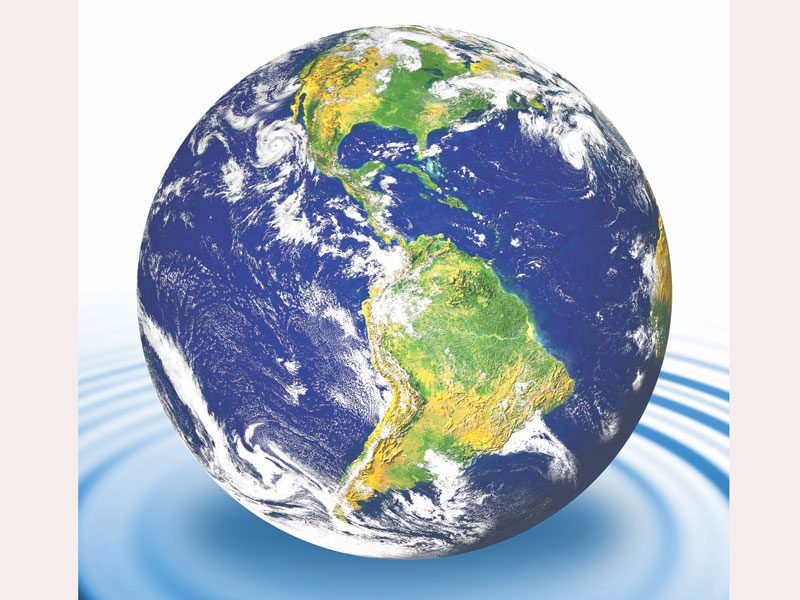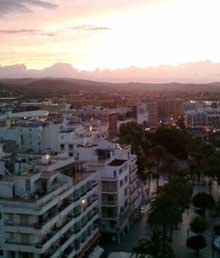By Kate Hudson
Earth Day came and went again this April 22nd, arriving as it does during one of the most glorious times of the year, when we are already intoxicated by the arrival of spring, by the offshore breezes, light filtering through new green leaves, by the song of the newly-arrived Painted Bunting, the squawking of nesting egrets, cloudless, blue skies, beckoning waters and the ridiculously riotous palate of color that spring lays out for us. This is a perfect time to pause to consider what the Earth provides us of course, and to respond with a deepening sense of responsibility to care for her. And yet, Earth Day, a single day among many, has often been so easy to overlook amidst all the glories of Spring itself.
Here we are at this moment in time, looking back over a year or more of Covid with all its trials, looking forward to a time when Covid is receding in the rearview mirror and yet, there in the corner of our eye, imperceptibly creeping out of our peripheral vision and into focus, is another lumbering concern, a giant suddenly bearing down upon us even as covid starts to fade away. 
Dare we pause to attend to this giant issue of our own creation, now shuffling into view? Do we stop to notice some of the changes that we have wrought and should not ignore? Or do we continue to shrug at the sunny day flooding of our streets? The rising tides that threaten our homes and even our businesses. Should we feign ignorance over the salt-water inundation that seeps into our farmlands and forces our wells to be dug more deeply? Do we pause to consider the cost of renourishing our once-broad beaches eroded by sea-level rise? Do we pay attention when we learn that our beloved sea turtles are born mostly female because of heat? Do we worry ourselves over the rising number of threatened shorebirds on our coasts or songbirds in the forests? Do we wonder why the fish are migrating northward? What about the potential for worsening storms? Storms that produce more rain and wind, bring the sea into our yards, topple trees and power lines? Do we notice the work stoppages when heat and humidity make it too hard for the human body to cool itself and thus unsafe to work outdoors . . . at the military base, or the construction site? Ahh, when do we notice that we are the frog in the boiling pot of water and decide to turn down the heat on the stove?
Yes, the giant that is looming over us and coming into focus is the climate crisis. We cannot pretend anymore that nothing is happening, that nothing has changed. Science confirms what we already know deep down, even if we don’t care to admit it. NOAA and NASA provide us with data on the rising heat and humidity. Satellites measure sea-level rise. We’ve all seen the pictures of the melt in Greenland; we’ve experienced the storms, Matthew, and Irma; we’ve witnessed the erosion of our beaches.
Oh, but it’s all so overwhelming, we feel! What can we really do anyway? Isn’t it really too late! Aren’t we doomed? Or… maybe it’s all just a hoax! There must be other explanations for the water on Charleston’s streets. For the frequent flooding on our barrier islands, for the trees that have died and toppled, for the increase in asthma, for the mistimed migratory patterns of our birds. Surely this is natural!
Oh, but the carbon in the atmosphere, you say? It’s surpassed 415 parts per million? That’s more carbon than we’ve had in the atmosphere since, well, over a million years ago, when trees were growing on Antarctica? No surely, that’s just a coincidence. It can’t be so. Surely, it’s better to leave it alone. It might hurt our vacation rental industry! It might be expensive! It might harm our real estate values. We can leave it to our grandchildren to solve . . . Surely they will know what to do . . .
Stop there. Just stop. It’s not too late. We already know what to do. We simply need to do it. The science is here. The innovations are coming. Not quite quickly enough, yet, but they are coming, and we can help to speed them up. We have solutions at our fingertips. What we need is the will, the political will. We need our legislators in Congress to rise to this challenge, to put aside their partisan rancor, to act on behalf of all of us.
Among other approaches (and it will take many), there is a simple, elegant market solution that can provide us with incentives to innovate and to reduce our carbon emissions quickly. That market solution, say the economists, the scientists, the policy makers is to price carbon—to put a steadily rising price on carbon at the source, the well, the mine, the port of entry—until that beautiful Earth Day in our future when our carbon emissions arrive at net zero. Let’s do this. Not to do it is to shirk our greatest responsibility to our children and our grandchildren. Not to do it is to leave a legacy of shame.
Kate Hudson is co-leader of the Citizens Climate Lobby of Beaufort. Find them on Facebook.








